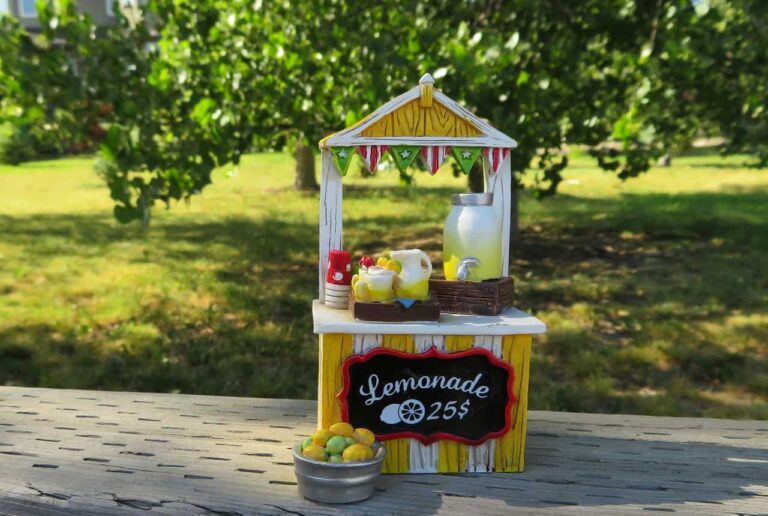How to Set Safe Boundaries While Letting Kids ‘Figure It Out’
As a parent, one of the most challenging aspects of parenting is finding the right balance between protecting your child and giving them the freedom to learn and grow. Dr. Becky Kennedy’s insightful reminder that “our job is to keep our children safe, physically and psychologically” resonates deeply with many of us.
boundaries that are both firm and fair, allowing our kids to develop essential life skills without exposing them to undue risk?
It’s a delicate balance, but one that’s crucial for raising confident, resilient children who understand the value of limits in life.
Key Takeaways
- Understand the importance of setting boundaries for your child’s safety and development.
- Learn how to balance protection with empowerment in your parenting approach.
- Discover practical strategies for creating effective boundaries that support your child’s growth.
- Find out when to step in and when to give your child space to learn from their experiences.
- Get real-life examples and language to use when establishing boundaries with your kids.
Understanding the Balance Between Boundaries and Independence
As parents, we’re constantly navigating the delicate balance between giving our kids independence and setting boundaries. This balance is crucial for their development, as it allows them to explore their surroundings while ensuring their safety.
Why Boundaries Matter for Child Development
Boundaries play a vital role in child development. They provide a sense of security and help children understand what is expected of them. By setting clear limits, parents can help their kids develop self-discipline and responsibility. When children know what is expected, they are more likely to make better choices and develop resilience.
The Value of Letting Kids Figure Things Out
Allowing kids to solve problems independently is crucial for building critical thinking skills and confidence. When we let kids figure it out, we give them the opportunity to develop problem-solving skills, which are essential for life. Research shows that children who are given appropriate independence develop stronger decision-making skills that benefit them throughout their life.
- Allowing children to solve problems independently builds critical thinking skills and resilience.
- Giving kids the freedom to make choices helps them develop confidence in their abilities.
- Gradually increasing independence as children demonstrate readiness is key to healthy development.
By understanding the importance of balancing boundaries and independence, parents can create a supportive environment that fosters healthy growth and development in their child over time.
The Psychology Behind Effective Boundary Setting
As a parent, setting boundaries is not just about discipline, but about creating a secure environment that fosters healthy development. By understanding the psychology behind boundary setting, parents can navigate the complex balance between giving children independence and ensuring their safety.

How Boundaries Create Security for Children
Boundaries play a crucial role in creating a sense of security for children. When parents set clear limits, children feel safe because they know what to expect. This clarity helps children develop emotional regulation skills, as they learn to navigate within the boundaries set by their parents. Effective limits focus on behaviors rather than emotions, allowing children to express their feelings while learning appropriate ways to act.
By setting boundaries, parents help children understand that their actions have consequences, which is a vital life lesson. It’s essential to differentiate between limiting behavior and controlling emotions, as the former teaches children about responsibility and the latter can lead to emotional suppression.
The Difference Between Limits and Control
The distinction between setting healthy limits and exerting excessive control is crucial. Limits are about safety and teaching, while control is often about power and stems from parental anxiety rather than the child’s needs. When parents exert control, it can damage the parent-child relationship and undermine a child’s developing autonomy.
In contrast, setting healthy limits respects a child’s dignity and personhood while providing necessary structure. For example, saying “I understand you’re upset, but it’s not safe to throw toys” sets a limit on behavior while validating the child’s emotions. This approach helps children develop self-regulation skills and maintains a positive connection between parent and child.
How to Set Safe Boundaries While Letting Kids ‘Figure It Out’
Establishing clear boundaries while allowing children to explore and learn from their experiences is crucial for their development. This balance is not always easy to achieve, but it is essential for raising resilient and independent kids.
Focus on What You Will Do, Not What They Can’t Do
When setting boundaries, it’s more effective to focus on what you will do rather than what your child can’t do. This approach helps to avoid power struggles and encourages children to think about the consequences of their actions. For example, instead of saying “you can’t play outside,” you could say “I will be watching you from the window to ensure your safety.” This way, you’re setting a clear boundary while giving your child the autonomy to make choices.
By focusing on your actions, you model the behavior you want your child to adopt. This helps them understand that boundaries are not just restrictions, but also a way to ensure their safety and well-being.
Providing Clear Reasons for Boundaries
Providing clear reasons for boundaries is essential for helping children understand and accept them. When children understand the “why” behind rules, they’re more likely to internalize the values those boundaries represent. For instance, explaining that a boundary is in place to keep them safe or to respect others helps them connect actions with consequences.
- Simple explanations help transform boundaries from arbitrary restrictions to meaningful protections in a child’s mind.
- Explaining boundaries builds critical thinking skills as children learn to connect actions with consequences.
- When children understand the reasoning behind rules, they’re more likely to follow them even when adults aren’t present.
This approach respects children’s intelligence and their natural desire to understand the world around them. By providing clear reasons, you’re not only setting boundaries but also teaching your child valuable life skills.
The Power of Language in Setting Boundaries
Language is a powerful tool in setting boundaries that our children can understand and respect. The tone of our delivery is crucial when discussing boundaries with our kids; being clear, calm, and firm is the goal. Initially, parents often tell children what to do rather than explaining what they, as parents, will do. This approach makes the boundary dependent on the child’s obedience, potentially leading to conflict and power struggles.
Empowering vs. Controlling Phrases
The phrases we use can either empower our children or make them feel controlled. For instance, saying “I’ll take care of this situation” rather than “You can’t do this” shifts the focus from restriction to parental action. This subtle difference in language can significantly impact how children respond to boundaries. When parents communicate calmly and clearly, children are more likely to cooperate rather than become defensive.
Calm and Clear Communication
Maintaining calm communication is vital, even in challenging moments. By staying calm, parents model emotional regulation for their children. Techniques such as taking a deep breath or stepping back for a moment can help in regaining composure. Clear language helps children understand expectations without confusion. Adjusting our communication style based on the child’s age, temperament, and the specific situation is also crucial. Research supports that boundaries communicated respectfully are more likely to be internalized by children.
Real-Life Examples of Effective Boundary Setting
In today’s world, setting boundaries is more important than ever, as it helps children navigate complex social situations and develop healthy relationships. As a parent, it’s essential to establish clear limits and boundaries to ensure your child’s emotional and physical well-being.
Effective boundary setting can be seen in various aspects of family life. For instance, setting boundaries around screen time is crucial in today’s digital age. Establishing screen-free zones and times helps children understand the importance of balance in their lives.
Screen Time Boundaries
Setting limits on screen time helps children develop healthy habits and reduces the risk of addiction. By establishing screen-free times, such as during meals or before bed, parents can help their children understand that there are times and places for everything.
Safety Boundaries in Public Places
When in public, it’s essential to set boundaries to ensure your child’s safety. Teaching children to stay close to you and holding hands in crowded areas are simple yet effective ways to maintain their safety. By setting these boundaries, parents can help their children understand the importance of being aware of their surroundings.
Boundaries During Conflicts Between Siblings
Conflicts between siblings are inevitable, but it’s how parents handle these conflicts that matters. By setting clear boundaries and separating the children when necessary, parents can teach their kids about respecting each other’s physical and emotional boundaries. For example, saying “I won’t allow hitting in our family. I’m going to separate you until everyone is calm” sets a clear limit and helps children understand what is expected of them.
By setting boundaries in these different situations, parents can help their children develop essential life skills, such as self-regulation, respect for others, and conflict resolution. These skills will benefit them throughout their lives, both within and beyond the family.
Teaching Kids to Set Their Own Boundaries
Empowering children to set their own boundaries is a crucial life skill that fosters independence and self-awareness. As a parent, it’s essential to teach your child how to establish and maintain healthy boundaries, which is vital for their emotional and psychological development.

The Importance of “No” as a Complete Sentence
Teaching children the value of saying “no” without feeling obligated to justify it is a powerful tool for setting boundaries. When children understand that “no” is a complete sentence, they can assert their needs and limits more effectively. As Anne Lamott once said,
“Almost everything will work again if you unplug it for a few minutes, including you.”
This quote highlights the importance of giving oneself the permission to say “no” and set boundaries.
By practicing the use of “no” in low-stakes situations, children can build confidence in asserting their boundaries. This skill will serve them well in various aspects of life, from personal relationships to professional settings.
Helping Children Recognize Their Comfort Zones
Helping children identify and articulate their personal comfort zones is a foundational step in teaching them to set healthy boundaries. Comfort zones vary from person to person, and it’s essential for children to understand that their comfort zones are unique to them. By recognizing physical and emotional sensations that signal when their boundaries are being crossed, children can develop a stronger sense of self-awareness.
Activities such as drawing or journaling can help children explore and define their personal boundaries. By supporting children in gradually expanding their comfort zones while still honoring their current limits, parents can help them develop resilience and emotional intelligence.
When to Step In and When to Step Back
The ability to discern when to get involved and when to give space is vital for fostering a child’s problem-solving skills. As parents, we often find ourselves torn between the desire to protect our children and the need to give them independence.
To navigate this challenge, it’s essential to understand the difference between situations that require intervention and those that are opportunities for growth.
Recognizing True Safety Concerns vs. Learning Opportunities
One of the key factors in deciding when to step in is identifying genuine safety concerns versus situations where children can learn from their experiences. For instance, if a child is about to touch a hot stove, immediate intervention is necessary. However, if they’re trying to figure out how to tie their shoes, it’s an opportunity for them to learn and develop problem-solving skills.
- Assess the situation to determine the level of risk involved.
- Consider the child’s age and ability to handle the situation.
- Be aware of your own instincts and biases as a parent.
Creating a Supportive Environment for Problem-Solving
Creating a supportive environment where children feel encouraged to solve problems on their own is crucial. This involves asking guiding questions that help them think through solutions rather than providing answers. For example, instead of saying “you should do this,” ask “what do you think you could do to solve this problem?”
By doing so, we help our children develop systematic problem-solving skills and learn from their mistakes without feeling ashamed or criticized.
Conclusion: Raising Resilient, Boundary-Aware Children
Raising children who are both secure and resilient requires a delicate balance between establishing clear boundaries and allowing them the freedom to figure things out. This balance is crucial in parenting, as it helps children develop into capable and confident individuals.
By setting consistent limits and giving kids the autonomy to make decisions, parents can create an environment where children feel both protected and empowered. This approach not only helps children understand boundaries but also teaches them valuable life skills such as self-regulation, problem-solving, and respect for others.
It’s essential to recognize that this balance will look different for every child and family. There’s no one-size-fits-all approach to parenting, and what’s most important is creating a supportive environment that fosters healthy development. By doing so, parents can help their children grow into resilient individuals who are well-prepared to navigate life’s challenges.
As parents, it’s crucial to trust your instincts while remaining flexible and responsive to your children’s changing needs. Remember, the way you set and respect boundaries speaks louder than any lecture you could give. By investing time and effort into thoughtful boundary-setting, you can give your children the gift of a strong foundation for a happy, healthy life.









